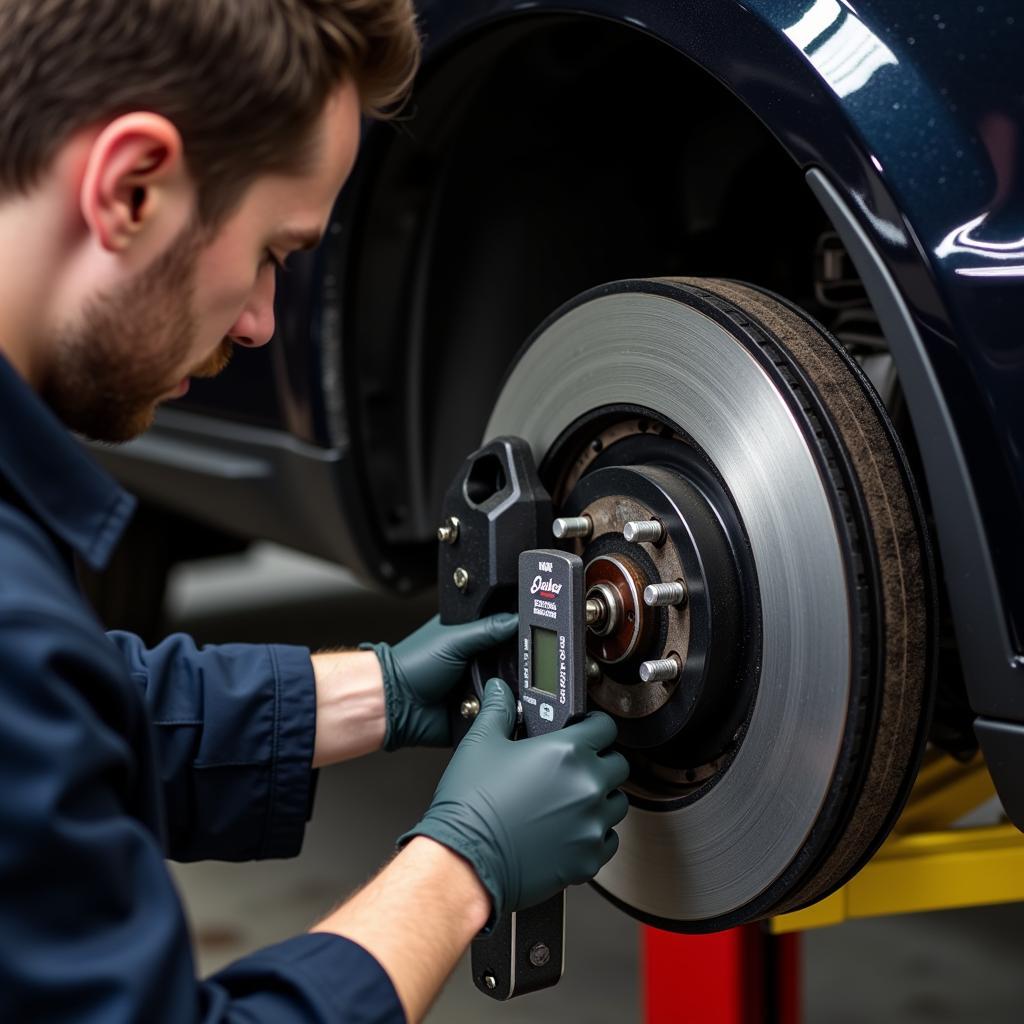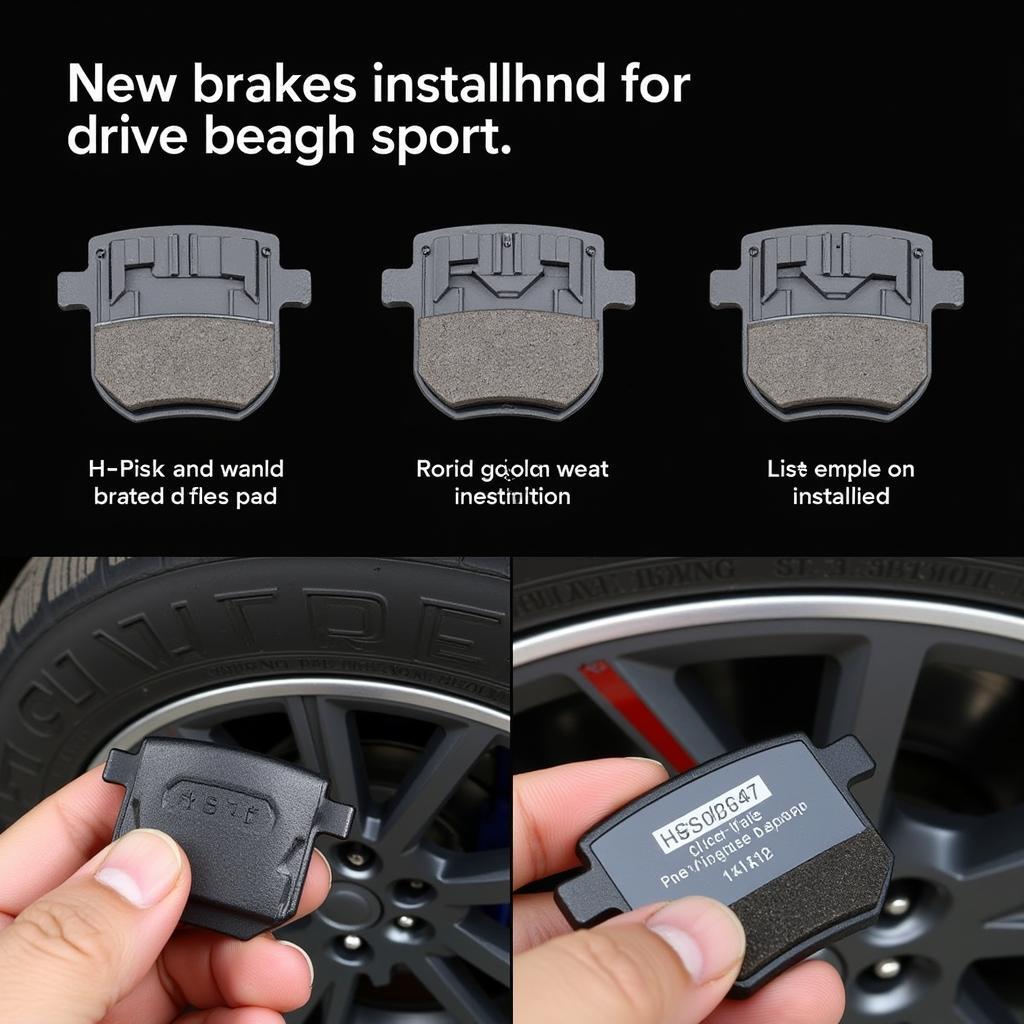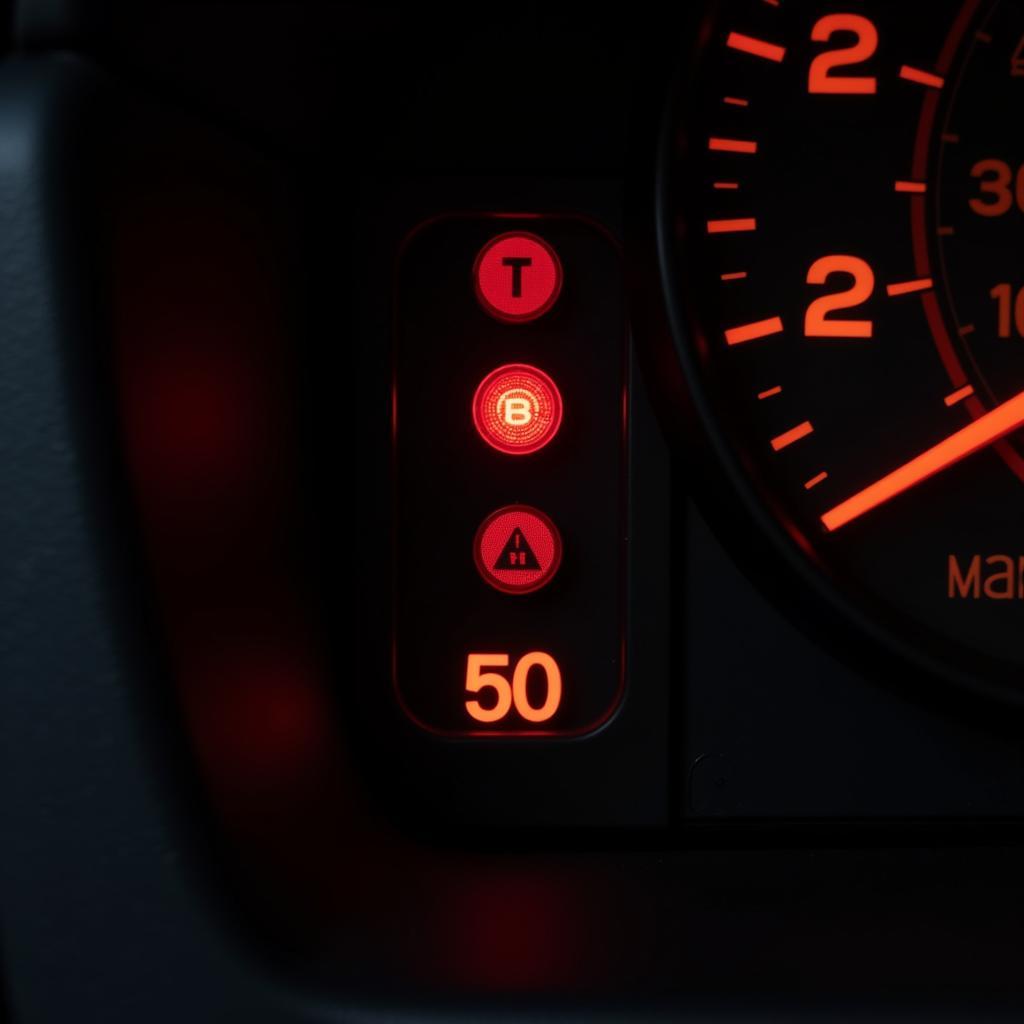Encountering a “brake pads worn” warning on your Range Rover Sport’s dashboard can be unnerving. This message signals that your brake pads have worn down to a critical level, requiring immediate attention to ensure your safety and prevent costly brake system damage.
This comprehensive guide will walk you through the intricacies of this warning, its implications, and the necessary steps to address it effectively.
Understanding Your Range Rover Sport’s Brake Pad Warning System
Your Range Rover Sport is equipped with a sophisticated electronic brake pad wear sensor system designed to alert you when the brake pads reach a predetermined minimum thickness. This system plays a crucial role in:
- Enhancing Safety: By providing timely warnings, the system prevents you from driving with severely worn brake pads, which can compromise braking performance.
- Preventing Costly Repairs: Addressing worn brake pads promptly can avert damage to the rotors and other brake components, leading to more expensive repairs.
What Triggers the “Brake Pads Worn” Warning?
The “brake pads worn” warning is typically triggered by a sensor embedded within the brake pad itself. This sensor, usually a thin wire, comes into contact with the brake rotor as the pad wears down. Once the pad reaches its minimum thickness, the sensor makes contact, completing a circuit and triggering the warning light on your dashboard.
What to Do When the Warning Light Illuminates
When the “brake pads worn” warning appears, it’s crucial to:
- Avoid Panic: While the warning light indicates a need for attention, it doesn’t necessarily mean your brakes are on the verge of failing.
- Assess Your Driving Conditions: If possible, avoid heavy braking or driving at high speeds.
- Schedule an Inspection: Contact a qualified mechanic specializing in Range Rover vehicles to inspect your brake system at the earliest opportunity.
 Range Rover Sport Brake Pad Inspection
Range Rover Sport Brake Pad Inspection
Can I Continue Driving with the Warning Light On?
While it might be tempting to continue driving with the warning light on, especially if you perceive no immediate braking issues, doing so is highly discouraged. Driving with worn brake pads not only jeopardizes your safety but can also lead to:
- Reduced Braking Efficiency: Worn brake pads reduce the friction required for effective braking, increasing stopping distances and the risk of accidents.
- Damage to Brake Rotors: As brake pads wear down, metal-to-metal contact between the pad backing plate and the rotor can occur, leading to costly rotor damage.
 Worn Brake Pads on Range Rover Sport
Worn Brake Pads on Range Rover Sport
Brake Pad Replacement: What to Expect
Replacing your Range Rover Sport’s brake pads is a relatively straightforward procedure for a qualified technician. Here’s what the process typically entails:
- Vehicle Inspection: A thorough inspection to assess the extent of brake pad wear, check the condition of the rotors, and identify any other potential issues.
- Brake Pad Replacement: Removal of the worn brake pads and installation of new ones.
- Rotor Resurfacing or Replacement: Depending on their condition, the rotors might be resurfaced to ensure a smooth surface for the new pads. If excessively worn, rotor replacement might be necessary.
- Brake Fluid Flush: Brake fluid, being hygroscopic, absorbs moisture over time, which can compromise braking performance. A brake fluid flush is often recommended during a brake pad replacement to ensure optimal braking system function.
- System Test: After the replacement, the mechanic will test the braking system to ensure proper function and responsiveness.
 New Brake Pads Installed on Range Rover Sport
New Brake Pads Installed on Range Rover Sport
Extending the Life of Your Brake Pads
While brake pad wear is inevitable, adopting certain driving habits can help extend their lifespan:
- Anticipate Stops: Gradually slowing down by easing off the accelerator and applying brakes gently reduces wear and tear on the pads.
- Avoid Riding the Brakes: Continuously resting your foot on the brake pedal, even lightly, generates friction and heat, accelerating pad wear.
- Lighten the Load: Carrying excessive weight in your Range Rover Sport puts additional stress on the braking system, leading to faster pad wear.
- Regular Maintenance: Adhering to your Range Rover Sport’s recommended maintenance schedule, including brake inspections, helps identify potential issues early on.
Conclusion
The “brake pads worn” warning on your Range Rover Sport shouldn’t be ignored. By understanding the warning system, acting promptly upon its illumination, and adopting preventative driving practices, you can ensure optimal braking performance, enhance safety, and avoid potentially costly repairs.

